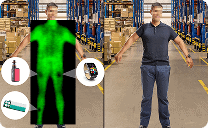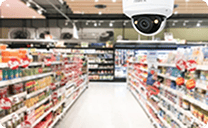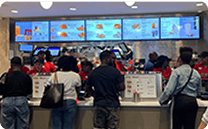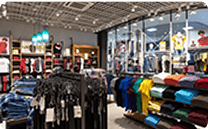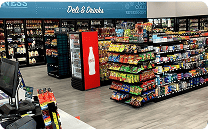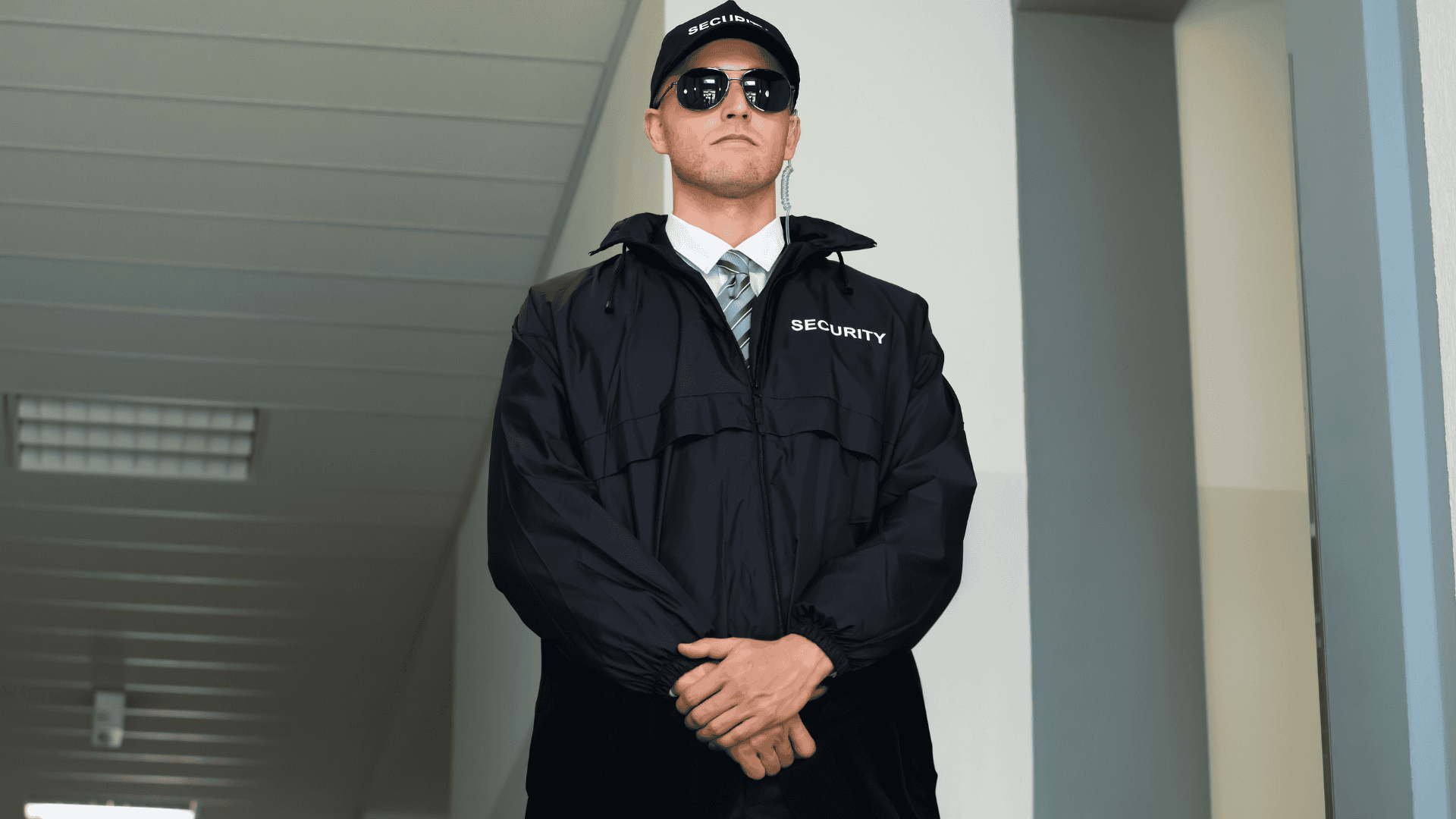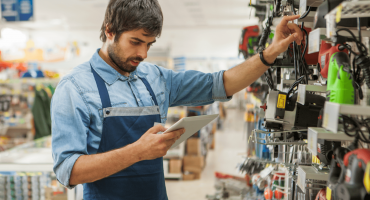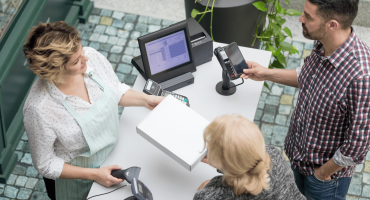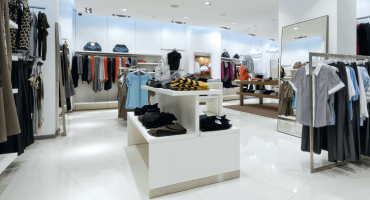In This article
Introduction
In the retail environment, owners and managers are responsible for the safety of employees, customers, and others and the protection of inventory and physical assets. Retail store safety guidelines are essential for maximum safety and security and to safeguard a store’s profits and bottom line. A proactive approach can stop or minimize risks to persons and property and create a more efficient operation.
Importance of Retail Store Safety
When a business owner creates retail store safety guidelines, customers and employees not only feel safer, but they are also more likely to be loyal. Customers will want to return and spend more, and employees can be more productive and contribute to the overall safety of the store.
- The legal consequences of a lack of retail store safety guidelines include lawsuits from injuries to customers or employees, government fines and penalties, and even criminal charges when ownership ignores safety issues.
- Continued negligence of store safety measures may result in closures or significant monetary awards from lawsuits.
- The financial consequences can include workers’ compensation and legal fees because of employees’ accidents or injuries, as well as increases in insurance premiums and liability insurance.
- Stores without safety guidelines can easily lose customers and hurt sales and profits.
- Employees may feel the same, causing a loss in productivity and greater employee turnover.
Identifying Key Risks in Retail Stores
Before business owners can develop and implement retail store safety guidelines, they must identify and understand their stores’ safety risks. Some are common, such as shoplifting and workplace injuries, but there may be unique risks depending on various factors, such as location (e.g., high crime rate area) and merchandise (e.g., hazardous chemicals). Identifying these unique risks is crucial for a comprehensive safety plan.
- Shoplifting and theft are significant safety risks. The store may be damaged, and customers and employees could be threatened.
- Workplace injuries, such as slips, trips, and falls, could lead to legal and financial consequences.
- Employee injuries, strains, and sprains when handling boxes of inventory should also be addressed in retail store safety guidelines.
- Falling merchandise from high or unstable shelves/racks can be a significant hazard.
- Retail store safety guidelines should also include the risks of a poor working environment, such as an inefficient HVAC system, inadequate ventilation, and electrical and chemical hazards.
- Fires, break-ins, natural disasters, and other emergencies can be extreme risks.
Developing a Comprehensive Safety Plan
Security and safety are so critical to retail success that every store needs a comprehensive safety plan. It will include retail store safety guidelines and other store safety measures. Retailers must first know their vulnerabilities before implementing the plan.
- The first step is a complete assessment of a store’s risks, such as those outlined above. Some stores may have unique security and safety concerns, so think “outside the box.”
- Next is creating a set of safety protocols to address all risks and vulnerabilities.
- Employee training is critical. They must know and follow the safety protocols, especially emergency preparedness, and receive updated training as needed.
- Employees are more likely to follow retail store safety guidelines if some of them are assigned safety responsibilities.
- A comprehensive safety plan is anchored by a clear commitment from ownership and management to prioritize security and safety.
Implementing Physical Security Measures
A comprehensive retail store safety plan will list which risks to address by implementing physical security measures. When these measures are implemented, employees and customers must be notified of disruptions.
- Surveillance of the shopping and employee areas is the most critical security measure, requiring the installation of the right CCTV security cameras, alarm systems, monitoring, and video storage equipment.
- Reviewing a store’s layout and lighting can eliminate or reduce security camera blind spots.
- Entrance and exit doors should be checked for secure locks and other deterrents. Security cameras are needed in storage areas and offices where transactions are processed.
- Emergency equipment and supplies should be easily and quickly accessible. A regular review and maintenance schedule will ensure readiness.
Employee Training and Awareness
A comprehensive safety plan and retail store safety guidelines can only be effective with employee training. They are more likely to be directly affected or the first to act when store security and safety are threatened.
- Employees must be trained in emergency preparation and response, know where equipment and supplies are located, and participate in regular evacuation drills.
- Employee training can prevent theft. They must know how to use security cameras and systems effectively and approach and address possible shoplifters calmly.
- Employees also need to know how to manage workplace violence with de-escalation techniques and be aware of a developing violent situation.
- When properly trained, employees can notice hazards and how to use store equipment safely.
- Employee training requires regular review and introduction of new retail store safety guidelines.
Customer Safety Guidelines
Customers are the lifeblood of the store, so making sure they feel safe and secure in the shopping environment can maximize their spending, return trips, and recommend the store to others.
- Retail store safety guidelines for customers start with a daily inspection of the exterior area to remove trash or other obstacles.
- Signage identifies emergency exits and warns of hazards.
- The interior of a store should be regularly inspected for general cleanliness, obstacles in the aisles, merchandise on the floor, and trash. Check for unsafe shelving, loose lighting, and dangling wires.
- Employees must know how to manage customers during emergencies, provide first aid, and contact emergency services.
Leveraging Technology for Retail Safety
Technology plays a crucial role in supporting retailers’ safety and security needs. It offers many features and functions to keep a store more secure and safer than years ago. More safety tasks are performed automatically, freeing employees to be more productive and giving customers an enjoyable shopping experience. Leveraging technology can enhance security, improve surveillance, and provide real-time threat detection, thereby making the store a safer place for everyone.
- The technology built into AI-powered security cameras and systems is capable of real-time threat detection, with object and facial recognition, motion detection, and many other advanced features.
- Electronic article surveillance (EAS) uses an electronic tag attached to each item to detect a possible shoplifting attempt and alert employees.
- Similarly, smart shelves detect when an item is removed and notify employees so they can monitor customer behavior.
- Automated alerts integrated with panic buttons can warn of immediate threats and emergencies.
Maintaining Compliance with Safety Regulations
Retail store safety guidelines must address compliance with safety regulations. OSHA (The Occupational Safety and Health Administration) focuses on hazards to workers. Local governments may have separate safety protocols and conduct regular inspections to determine if a retailer is adhering to regulations.
- Retailers who conduct regular safety audits and inspections themselves minimize inspections from government agencies and demonstrate they are proactive about safety concerns.
- Just as important is to act on self-safety audits and inspections. Repair and replace security cameras and equipment for optimal performance.
- Compliance with fire and other emergency codes is necessary. Retailers should be aware of accessibility regulations for people with disabilities.
- Collecting data on employees and customers also requires adherence to data security policies.
Cost-Benefit Analysis: Investing in Retail Safety
Investing in retail safety and security is a wise decision. Without retail store safety guidelines, operating efficiently and maximizing store traffic, spending, and profitability are impossible.
- Inadequate investment in retail store safety can increase shrinkage and other threats, damaging the bottom line. Retailers can be more vulnerable to liability claims from injuries and other safety incidents.
- A sufficient investment shows retailers care about the safety of their employees and customers and protects the store’s brand and reputation.
- Performing a cost-benefit analysis will reveal that a wise investment in retail safety and security costs less than the alternatives: more shrinkage, store damage, and risks to employees and customers.
- Employee injuries can result in loss of productivity, short staffing, and increased benefit costs.
Best Practices for Continuous Improvement
Retail store safety guidelines are not a one-off effort. They and associated employee training require a constant review to ensure the investment delivers the anticipated ROI and to maintain a safe and secure environment.
- Regularly perform safety audits and inspections, and update store safety measures to address evolving threats and risks.
- AI technology in security cameras and systems will improve almost all existing retail store safety guidelines, and these technologies are constantly evolving.
- Store safety is enhanced when owners welcome input from employees and customers about safety concerns and their suggestions for making the store safer.
- AI technology and other advanced security and safety systems generate large amounts of detailed data, which can be analyzed to identify safety gaps and help develop new strategies.
Conclusion
Retail store safety guidelines and other best practices are essential for any retail establishment’s smooth and profitable operation. They ensure happy customers who are eager to return and loyal employees who want to work there. How they feel about their safety has a direct impact on store profitability.
Committing time to developing retail store safety guidelines, making the right investments in security cameras and systems, and providing employee training puts innovative retailers in the best position to succeed. Learn more about DTiQ safety and risk management solutions on our website.
